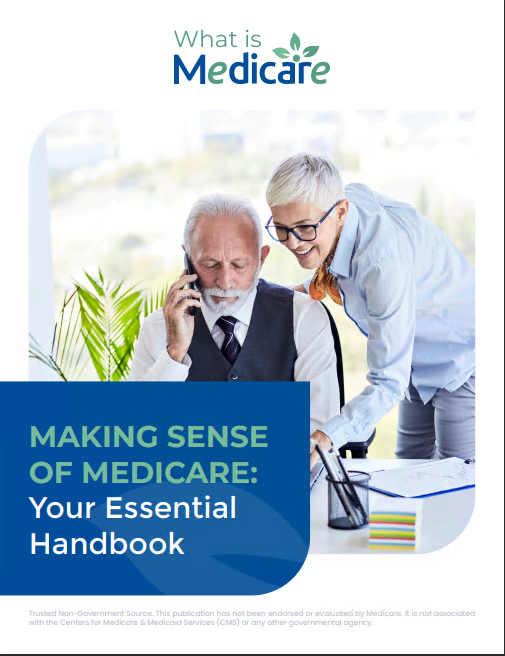Key Takeaways
-
Medicare Part D now includes a $2,000 out-of-pocket cap, offering relief for those with high prescription drug costs.
-
Additional changes in 2025 impact how costs are structured, including the elimination of the coverage gap (donut hole) and a new payment flexibility option.
What’s New in Medicare Part D for 2025?
Medicare Part D has undergone a major shift in 2025, bringing long-awaited cost relief for millions of beneficiaries. If you rely on prescription medications, understanding these changes can help you budget better and take advantage of new benefits. The most notable update is the $2,000 out-of-pocket cap, which significantly reduces the financial burden for those who spend a lot on prescriptions.
Beyond the cap, there are other key modifications to how costs are structured. The infamous coverage gap, often referred to as the “donut hole,” is no longer part of the equation, simplifying your coverage phases. Plus, there’s a new way to manage your medication expenses through a payment flexibility option that allows you to spread out-of-pocket costs over time.
Let’s break down how these changes work and what they mean for you in 2025.
Understanding the $2,000 Out-of-Pocket Cap
One of the biggest game-changers in 2025 is the introduction of a $2,000 annual out-of-pocket cap for Medicare Part D enrollees. This means that once you hit $2,000 in covered prescription drug costs, you won’t have to pay anything else for your medications for the rest of the year.
How Does the Cap Work?
Previously, Medicare Part D had multiple cost-sharing phases, including a coverage gap that left many people responsible for a large portion of their drug expenses before reaching catastrophic coverage. Now, with the $2,000 cap in place, once you spend that amount on covered medications, your plan picks up the rest of the cost. There’s no longer a separate catastrophic phase with additional cost-sharing.
What Counts Toward the Cap?
The cap includes what you pay out-of-pocket for your medications, including:
-
Deductibles (if your plan has one)
-
Copayments and coinsurance
-
Any other cost-sharing required by your plan for covered drugs
Premiums, however, do not count toward the $2,000 cap. You’ll still need to pay your plan’s monthly premium even after reaching the cap.
Medicare Part D Phases in 2025
With the elimination of the coverage gap, Medicare Part D now consists of three key phases:
1. Deductible Phase
In this phase, you pay 100% of your prescription drug costs until you reach your plan’s deductible. The maximum deductible for 2025 is $590, though some plans may set it lower.
2. Initial Coverage Phase
Once you meet the deductible, you enter the initial coverage phase. During this stage, you pay a percentage of your drug costs (either as a copayment or coinsurance) while your plan covers the rest. This phase continues until your total drug costs (including what you and your plan pay) reach $5,030.
3. Catastrophic Coverage Phase (Replaced by the $2,000 Cap)
Previously, after exiting the coverage gap, you entered the catastrophic phase, where you paid a small percentage of your drug costs. In 2025, this phase no longer exists. Instead, once your out-of-pocket costs reach $2,000, your plan covers 100% of covered drugs for the rest of the year.
A New Payment Flexibility Option
Another big change in 2025 is the introduction of a new Medicare Prescription Payment Plan that allows you to spread your out-of-pocket drug costs over the course of the year instead of paying large amounts upfront.
How Does It Work?
If you expect to hit the $2,000 cap early in the year, this new payment option lets you divide that cost into more manageable monthly payments. Instead of paying large lump sums in the first few months, you can distribute payments more evenly throughout the year. This is particularly useful for those on fixed incomes who need to budget carefully.
Who Can Use This Option?
Most Medicare Part D enrollees are eligible, but you’ll need to opt in to take advantage of this feature. Your plan will provide details on how to enroll and set up a payment schedule.
What These Changes Mean for You
These updates to Medicare Part D make it easier to afford prescription medications, especially if you have high drug costs. Here’s what you should keep in mind:
-
Lower out-of-pocket spending: The $2,000 cap provides significant financial relief.
-
No more donut hole confusion: The simplified cost structure means fewer surprises when it comes to medication costs.
-
Greater payment flexibility: You now have an option to spread costs over time instead of paying large amounts all at once.
What You Should Do Next
To make the most of these changes, take the following steps:
-
Review Your Plan: Even though all Part D plans follow the new structure, they still differ in terms of premiums, drug formularies, and network pharmacies.
-
Check Your Drug Costs: If you take expensive medications, estimate when you might reach the $2,000 cap and consider whether the new payment option makes sense for you.
-
Compare Plans During Open Enrollment: Medicare Open Enrollment runs from October 15 to December 7 each year. This is your chance to switch plans if another option better suits your needs.
-
Sign Up for the Payment Plan if Needed: If you want to spread out your prescription drug costs, check with your plan about enrolling in the Medicare Prescription Payment Plan.
The Bottom Line: A Better Medicare Part D Experience
The changes to Medicare Part D in 2025 represent a major step forward in making prescription drugs more affordable for millions of beneficiaries. With the new $2,000 cap, you no longer have to worry about runaway medication costs, and the elimination of the coverage gap simplifies the process. Plus, the introduction of a flexible payment plan gives you more control over how and when you pay.
If you have questions about how these changes impact you, get in touch with a Medicare professional listed on this website. They can help you navigate your options and ensure you’re making the best choice for your prescription drug coverage.










